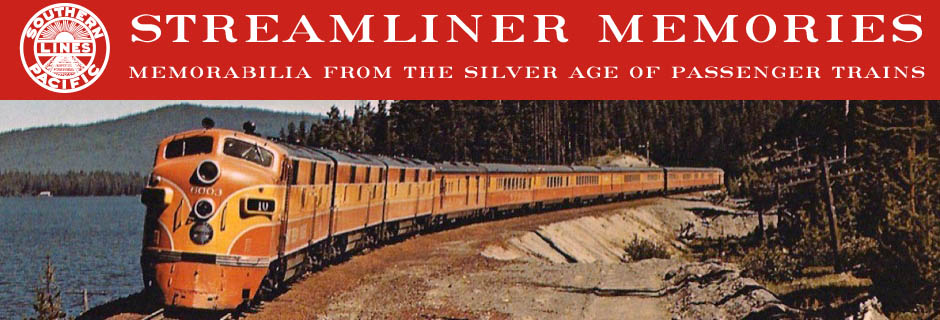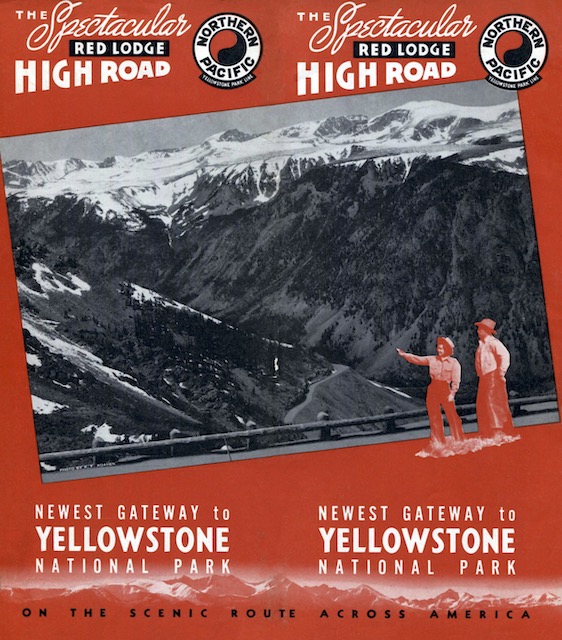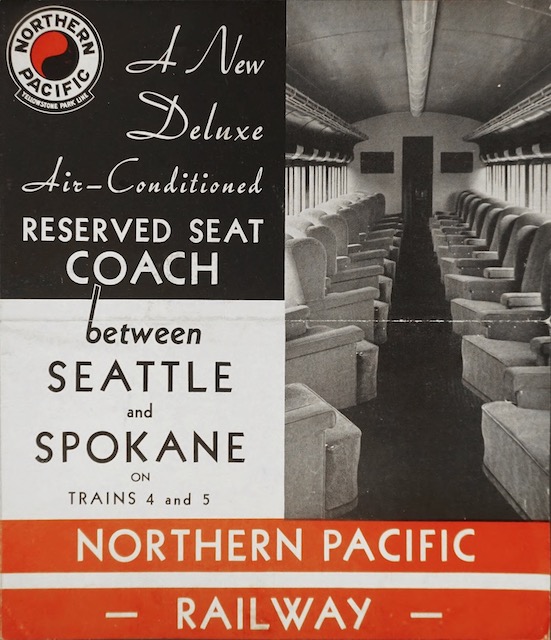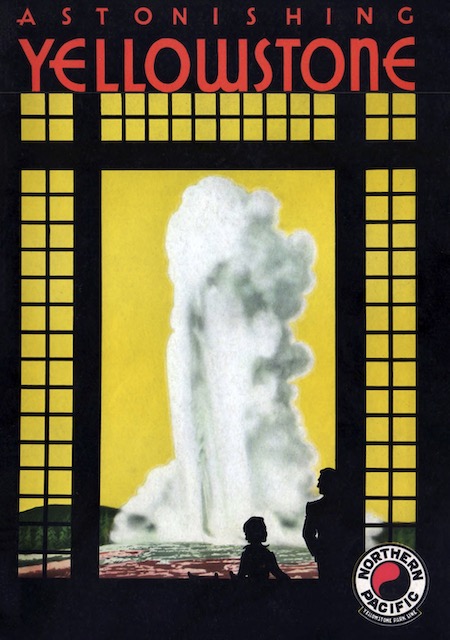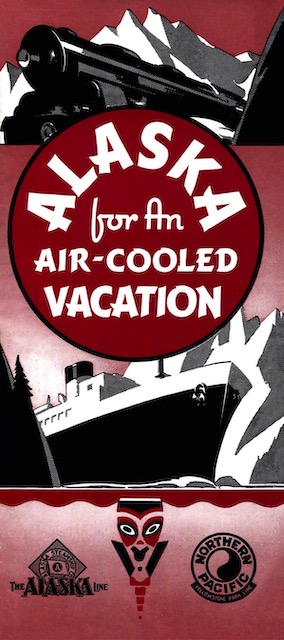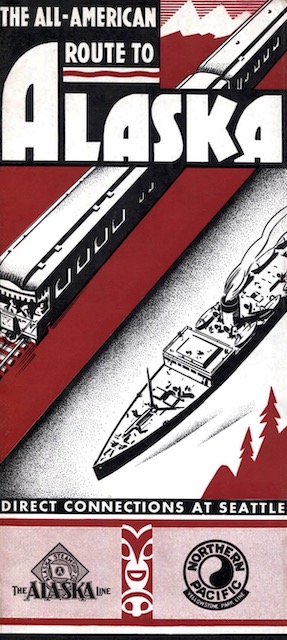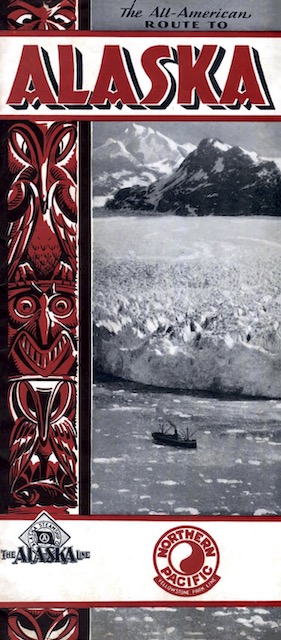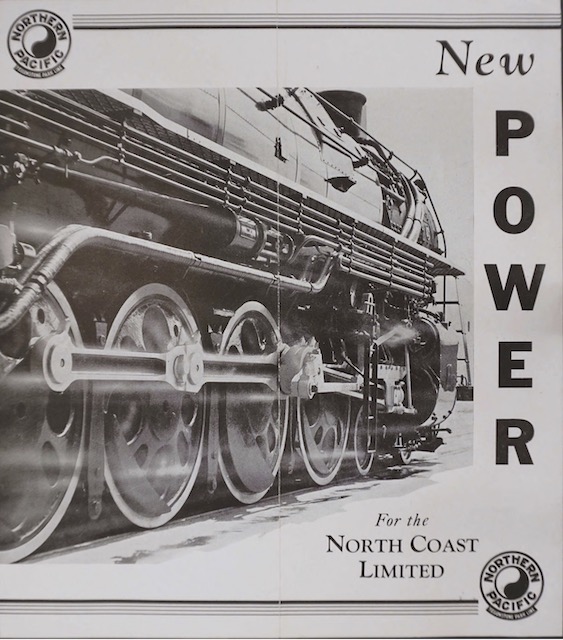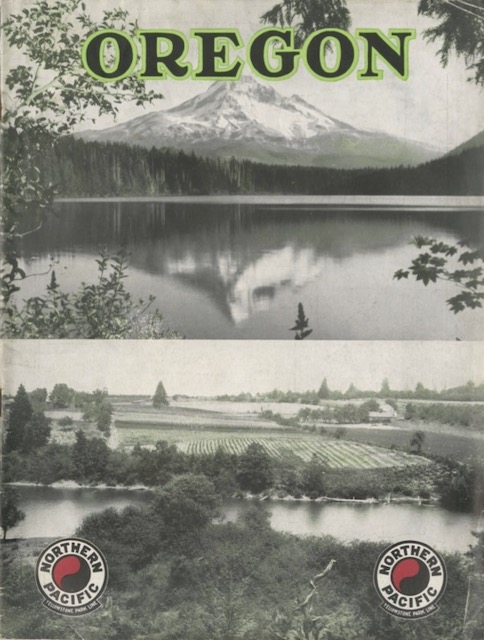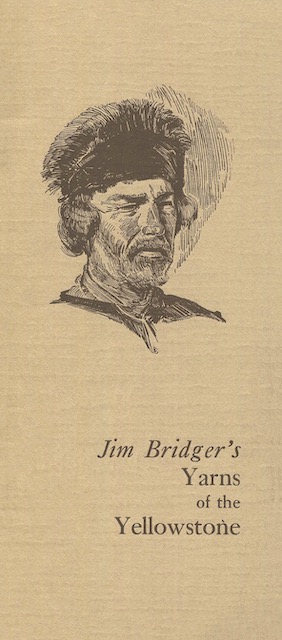This booklet, which is courtesy of the NPRHA — Lorenz Schrenk collection, was prepared by Golden Gate International Exposition commission and shared with the Northern Pacific and other railroads with two blank pages for the railroads to use to advertise their trains. We’ve previously seen the same booklet in a Milwaukee Road edition. Other than the railroad logos on the back covers (shown below), the only information unique to each railroad’s edition is on pages 20 and 21.
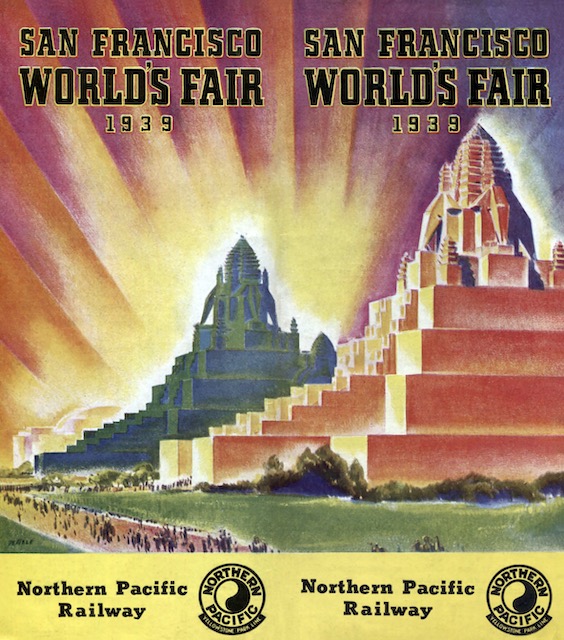 Click image to download a 8.4-MB PDF of this 24-page booklet.
Click image to download a 8.4-MB PDF of this 24-page booklet.
For people living near the NP west of Minneapolis-St. Paul, taking the Northern Pacific (or Milwaukee) might have been the best way to get to San Francisco. It would have been harder to entice people in or east of the Twin Cities. Where the Milwaukee Road emphasized the comforts of its trains, NP’s approach was to focus on scenery and access to Yellowstone, Rainier, and Olympic parks as attractions people could enjoy “if time permits.”
